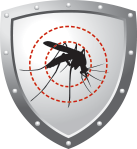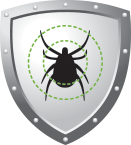FAQs About Ticks
What diseases do ticks spread?
Ticks transmit Lyme disease, Rocky Mountain spotted fever, St. Louis encephalitis, tick paralysis, tularemia, cytauxzoonosis, canine ehrlichiosis, hepatozoonosis, anaplasmosis and babesiosis. Ticks also transmit human diseases including malaria and HIV/AIDS.
How do ticks attach?
Ticks have sharp mouth parts that are barbed, rather like tiny crab claws, which make them difficult to be dislodged from the host.
How do ticks feed?
Ticks begin feeding by secreting a numbing chemical, so the host doesn’t feel their hard, stabbing mandibles pierce the skin. Their saliva contains enough bacteria and protozoa to make them among the most potent disease vectors in the world.
A hungry tick is flat, like a freckle, but it has an elastic abdomen, so a female can suck up a hundred times its own body weight in blood. Then, the female lays several hundred eggs before she shrivels up and dies. When she dies, she leaves behind the carapace, or outer covering, and eight legs.
How do I remove a tick?
Ticks literally bury their heads into the skin to suck fluids. Do not try to squeeze them. Do not heat them with matches, pour alcohol on them or slather them with petroleum jelly. Instead, for tick removal, slip a pair of tweezers or tick puller as close to the skin as possible, and gently ease the tick out. GRAB BY THE HEAD, where the tick enters the skin, not by the body. Pull gently and do not twist.
How do I kill a tick?
Drop the tick into alcohol to kill it. Flushing down the toilet will not kill ticks. Do not squish the tick to death with your fingers. Contagious tick-borne diseases are transmitted this way. Instead, drop the tick into a container of alcohol.

